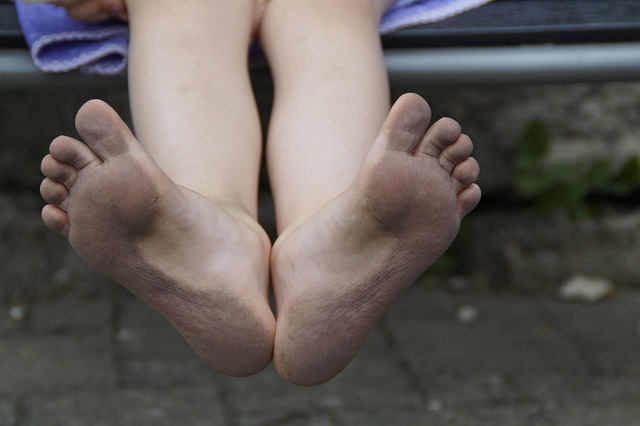Illinois Foot Care: From Dry Skin to Plantar Fasciitis
Our feet have to work very hard all day long - every day. Still they are a part of our body that we often neglect. They are therefore prone to illnesses and infections. In the following we present you with some of the most common foot problems.
Dry skin
Dry Skin can cause burning and itching feet. Use mild soap and a moisturizing cream or lotion on your legs and feet daily. Be cautious about adding oils since they can make the tub quite slick.
 Bacteria & Fungus
Bacteria & Fungus
This conditions usually happen because our feet spend lots of time in a warm, dark, humid area which is the ideal place for fungus or bacteria to grow. Bacterial and fungal conditions can cause blisters, itching, dry skin, redness, and peeling. This conditions may be difficult to treat, if not treated immediately. If not treated correctly, the infection may reoccur. To prevent diseases, keep your feet - particularly the place - dry and clean. Alter your shoes and stockings or socks frequently to help keep your feet dry. Attempt dusting your feet daily. Speak with your physician, if your foot state will not get better within 2 weeks.
Calluses & Corns
For those who have calluses or corns, see your physician. Using special pads or occasionally wearing shoes solves the issue. Treating corns and calluses yourself may not be harmless, particularly when you've got poor circulation or diabetes. Over-the-counter medicines include acids but don't treat the cause. Occasionally these medications reduce the requirement for operation, but check with your physician prior to using over-the-counter.
Plantar Fasciitis
When there's increased stress microscopic tears can happen on the heel, normally within the plantar fascia. This causes pain and inflammation with walking and standing and occasionally at rest. It typically causes stiffness and pain on the backside of your heel. Plantar fasciitis is the very most common heel pain. In the U.S. alone around one third suffers from plantar fasciitis at least once in their life. If you experience a horrible pain in your heel first thing in the morning (with your first step), chances are that your plantar fascia is inflamed. Although there are certain treatments, curing plantar fasciitis can be an ongoing and long process.
Warts
Warts are skin growths due to viruses. Over-the-counter are occasionally debilitating and, if untreated, may propagate. Since warts are seldom cured by over the counter preparations, see your physician.
Hammer Toes
A hammer toe can be occasionally called mallet toe or a claw toe. The tendon along with the toe pulls tougher or the tendon on the base of the toe pulls more difficult. This leads to a curling up.
Bunions
Bunions develop when the joints fit together as they should and become painful and distended. Bunions often run in families. A physician may also prescribe cortisone injections and anti-inflammatory drugs .
Ingrown toenails happen when a bit breaks the skin - which can occur in case you don't cut your nails correctly. Ingrown toenails are hardly unusual in the big toes. A physician can remove the section of the nail which is cutting into your skin. This enables the region to treat.
A QuickFoot Care 101
Whether walking, running, working out, or simply standing, having feet which are well-cared for (and not in pain) is something everyone should want. So, knowing the best way to take care of your feet is essential.
When your feet do not get the focus needed, long-term difficulties can grow, which may trouble you for a long time to come. Oftentimes, there are a number of easy stretches and exercises that will help keep your feet. This report will introduce you to these thoughts, in addition to offer you valuable guidelines that can cause you to be an expert shoe-shopper -- competent to choose shoes that are supporting, comfy (in the right size) every time.
But there are a number of situations when you might want to visit a specialist. An emergency arises or when serious harm happens, you should see a podiatrist -- or the er. Those who have diabetes or continuing circulation problems also needs to consult with a physician where any foot issues are concerned. Here's why: The reality is that anyone can have such issues, although circulation difficulties in many cases are linked with older feet. When there is insufficient blood flowing to your own feet, you may experience numbness, cramping, tingling, and discoloration of your skin and toenails.
Blood flow can be restricted by regular conditions: in cold water or when feet get chilly outside; when undergarments, or shoes, stockings are not overly loose when you have sat too long with your legs crossed. And in case you're under acute pressure, your nerves can constrict your arteries that are little, decreasing their ability.